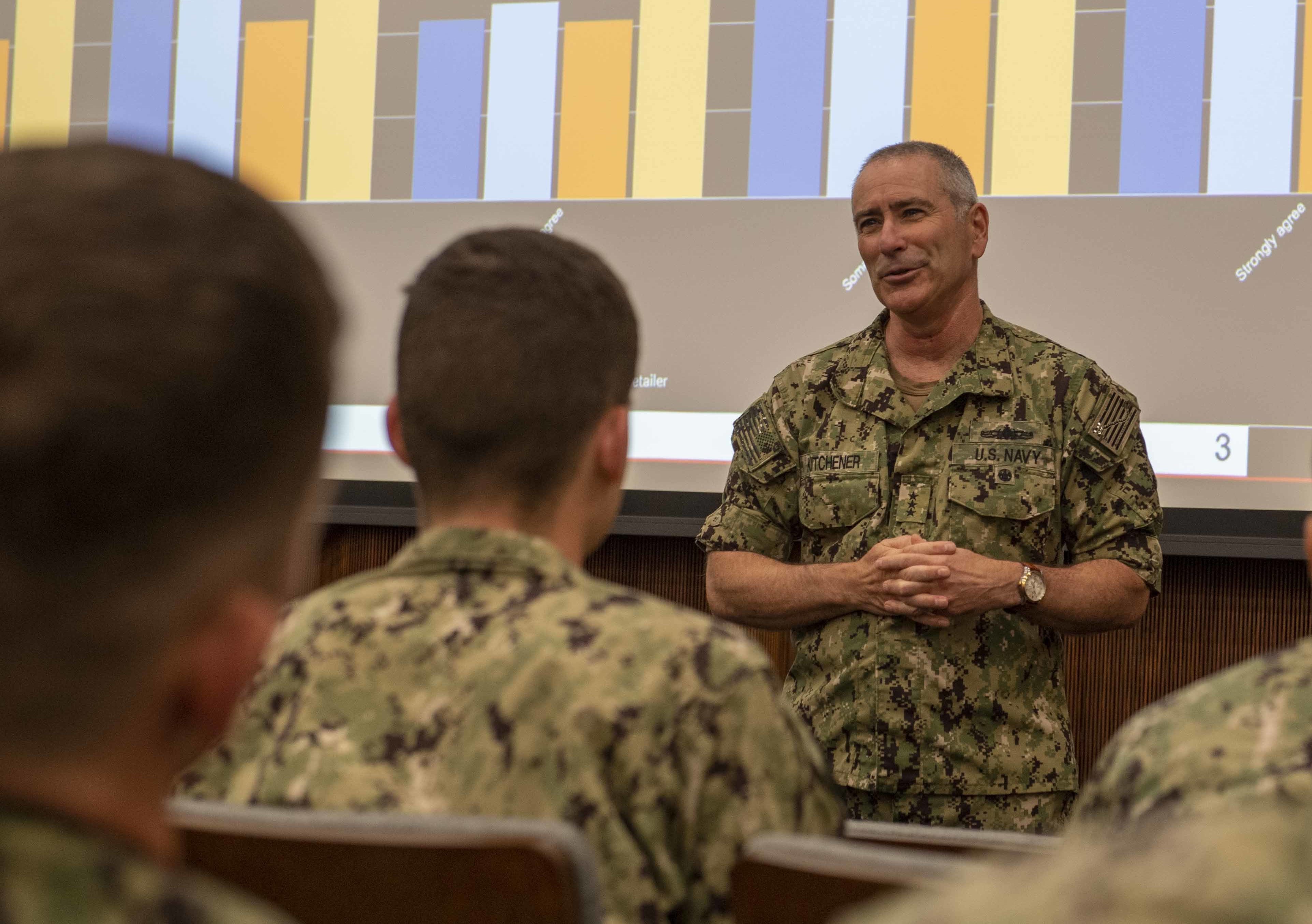
Surface warfare reforms crafted to improve mariner skills and manage demand for ships are trickling into the fleet five years after two fatal collisions in the Western Pacific forced the Navy to retool how the service trains the surface fleet.
Multiple investigations and criminal prosecutions found that basic failures in seamanship and ship handling led to the June 17, 2017, early morning collision between USS Fitzgerald (DDG-62) and ACX Crystal off the coast of Japan. Seven sailors died.
Two months later, a misunderstanding of a newly installed throttle control system led to USS John McCain (DDG-56) drifting out of a ship separation scheme outside of Singapore and colliding with merchant tanker Alnic MC. Ten sailors died.
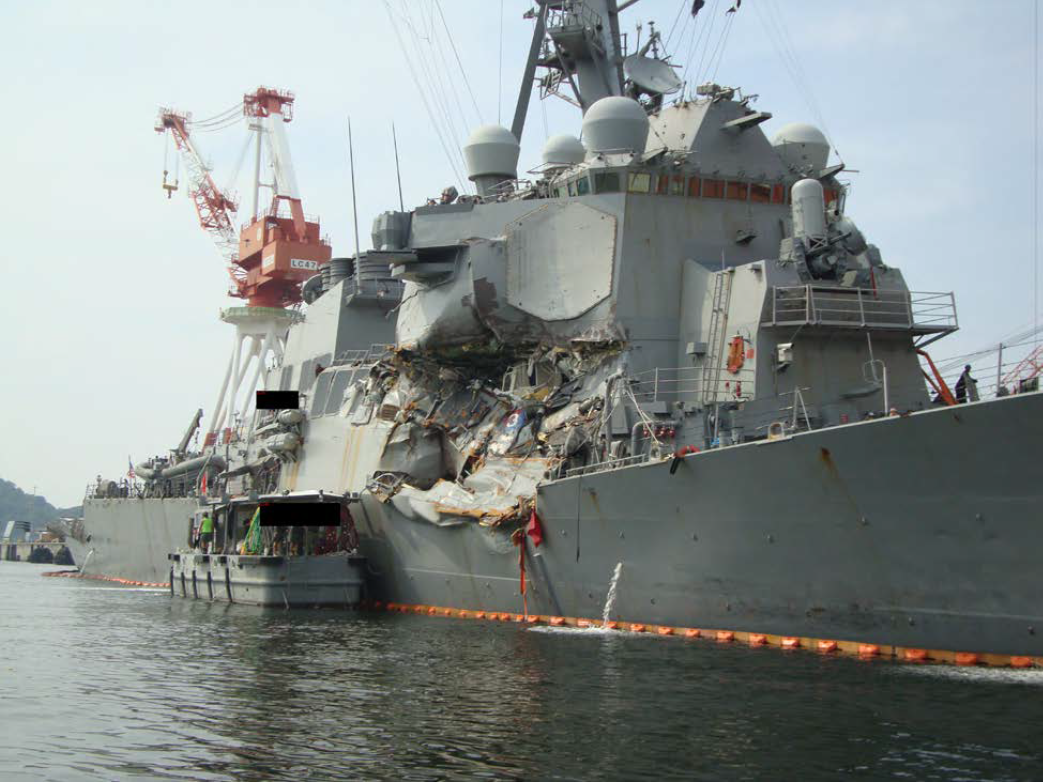
Two subsequent Navy reviews into the fatal collisions – and two other cruiser incidents in 2017 – found systemic problems in basic ship handling and navigation in the surface force, with crews that worked too much and slept too little to meet an unrelenting demand for forces.
The reviews generated a list of more than 100 recommendations for improvements to training and procedures, resulting in a restructuring of the career path for surface warfare officers and a pledge from the Navy to Congress to have a minimum amount of manning aboard surface ships.
Five years following the collision of Fitzgerald and Crystal, the surface community is still working through the recommendations and is starting to see incremental, but tangible, improvements in the health of the surface force, Vice Adm. Roy Kitchener, Naval Surface Forces commander, told USNI News this week.
“We remain on a positive trajectory. I do believe that, based on some good evidence, that maritime skills competency has definitely improved,” Kitchener said.
On Shore
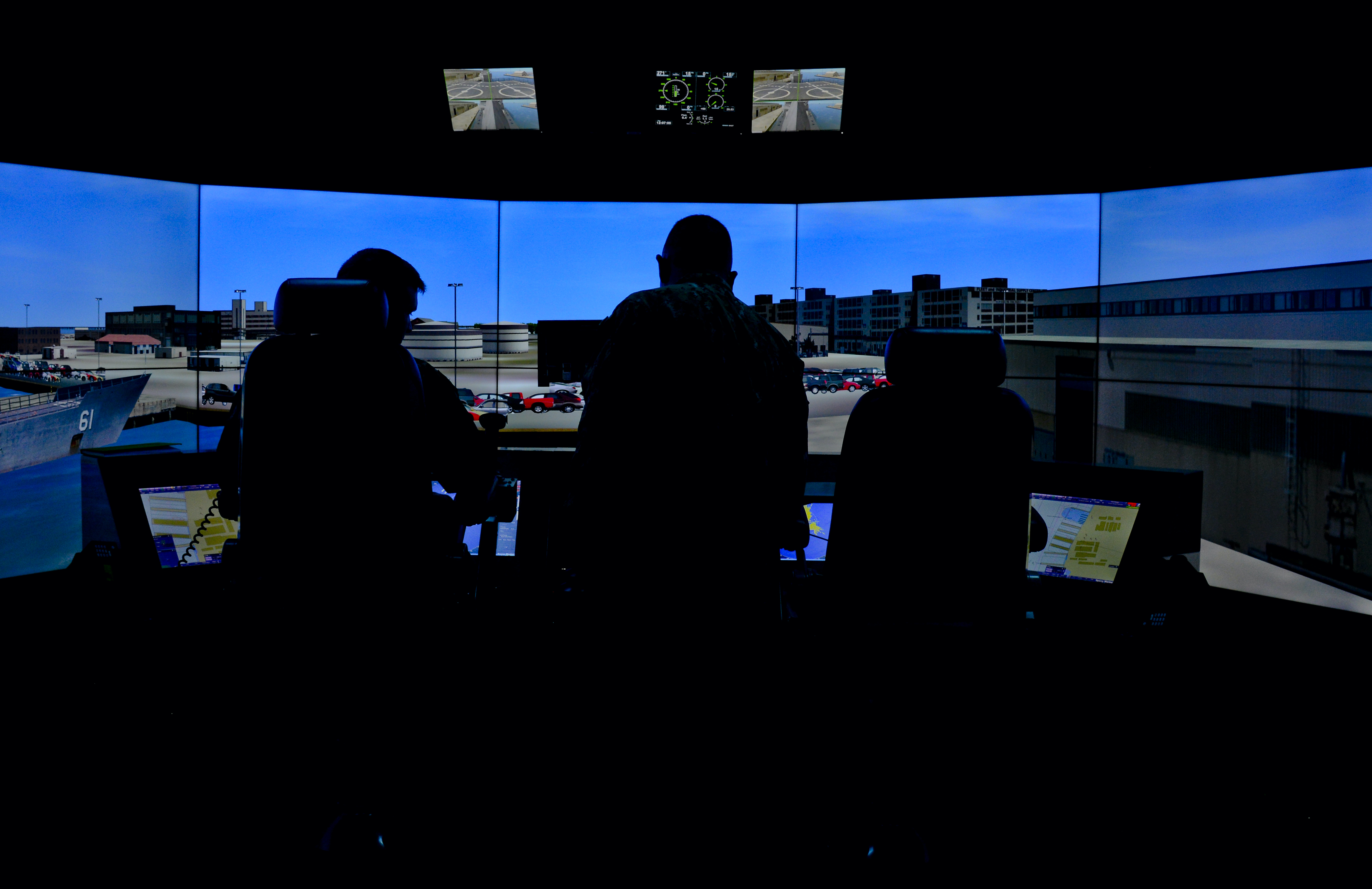
The reforms following the 2017 collisions follow two decades of shortened training for sailors and the surface force skipping maintenance during the wars in Afghanistan and Iraq.
In 2003, the same year the U.S. invaded Iraq, the Navy cut the 16-week training at Surface Warfare Officer’s School and relied on new ensigns squeezing in training via CD-ROMs between schedules to learn the mariner skills. In 2012, the Navy restored an eight-week SWOS course.
Early recommendations from the investigation, partially based on the failures of the bridge crews on Fitzgerald to adhere to the basic rules of the road, called for the Navy to beef up early training for new ensigns and expand SWOS.
That included two officer of the deck (OOD) training periods that teach junior officers to run the bridge using high-fidelity simulators.
In 2019, the Navy required all new surface warfare officers following their first schoolhouse – the Basic Division Officer Course (BDOC) – to complete an officer of the deck course. The course grew from four weeks to six last year. New SWOs have 772 hours of simulator training to learn basic mariner skills. The time is double the previous requirement, Kitchener said. SWOs take a second OOD assessment following their first division officer tour to gauge their knowledge of maritime rules of the road.
“These structured courses, individual courses like OOD phase one and two, coupled with fleet … training, where you bring a ship team over and they train on the waterfront and evolutions with the quartermasters and everybody in the full mission bridge, that’s reinforcing all that individual training,” Kitchener said.
“I’m pretty confident to say that our division officer scores have gone up.”
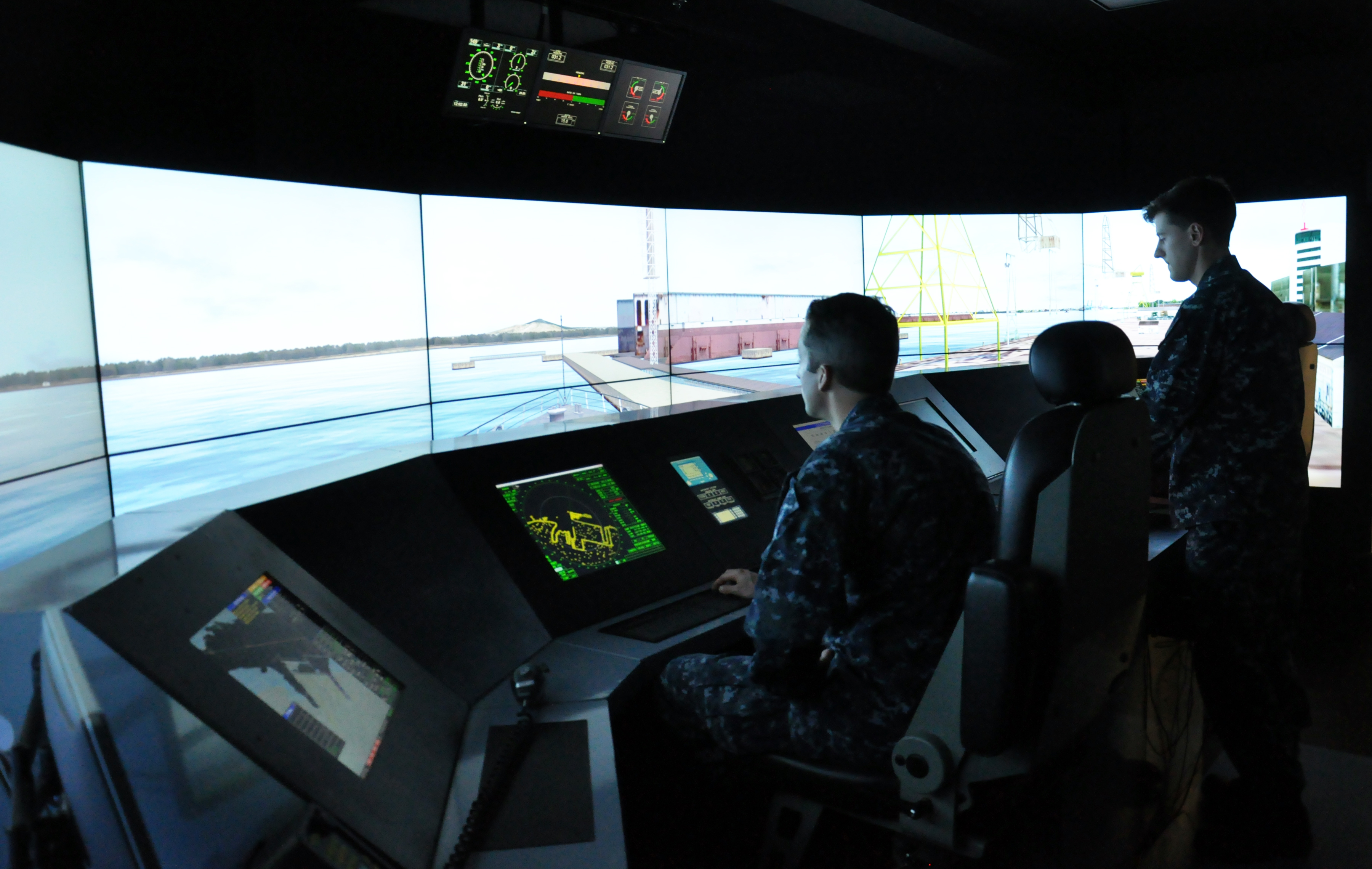
The assessments are part of a larger reform to the SWO career path instituted in 2018 under previous SWO Boss retired Vice Adm. Richard Brown that created ten pass-or-fail assessments throughout a surface officer’s career up to when they take command of a ship.
“There was a significant investment in trainers to give everybody the tools to train. It’s not only improved, I think JO ship handling, but their ability to use some of the tools on the ship … the different radars,” he said.
“By adding in the rigor where we have the assessments, we have 10 of them, and there are four no-gos built into it. If you don’t pass, you don’t go to the next wicket. That’s provided that rigor, certainly we’ve seen some attrition there.”
Last year, the GAO found that while the improvements have helped, officers leave the service at a higher rate than aviators or submariners.
“SWOs had shorter average careers and higher separation rates compared with officers in similar U.S. Navy communities, despite the U.S. Navy’s investments in SWO training,” reads the report.
At Sea
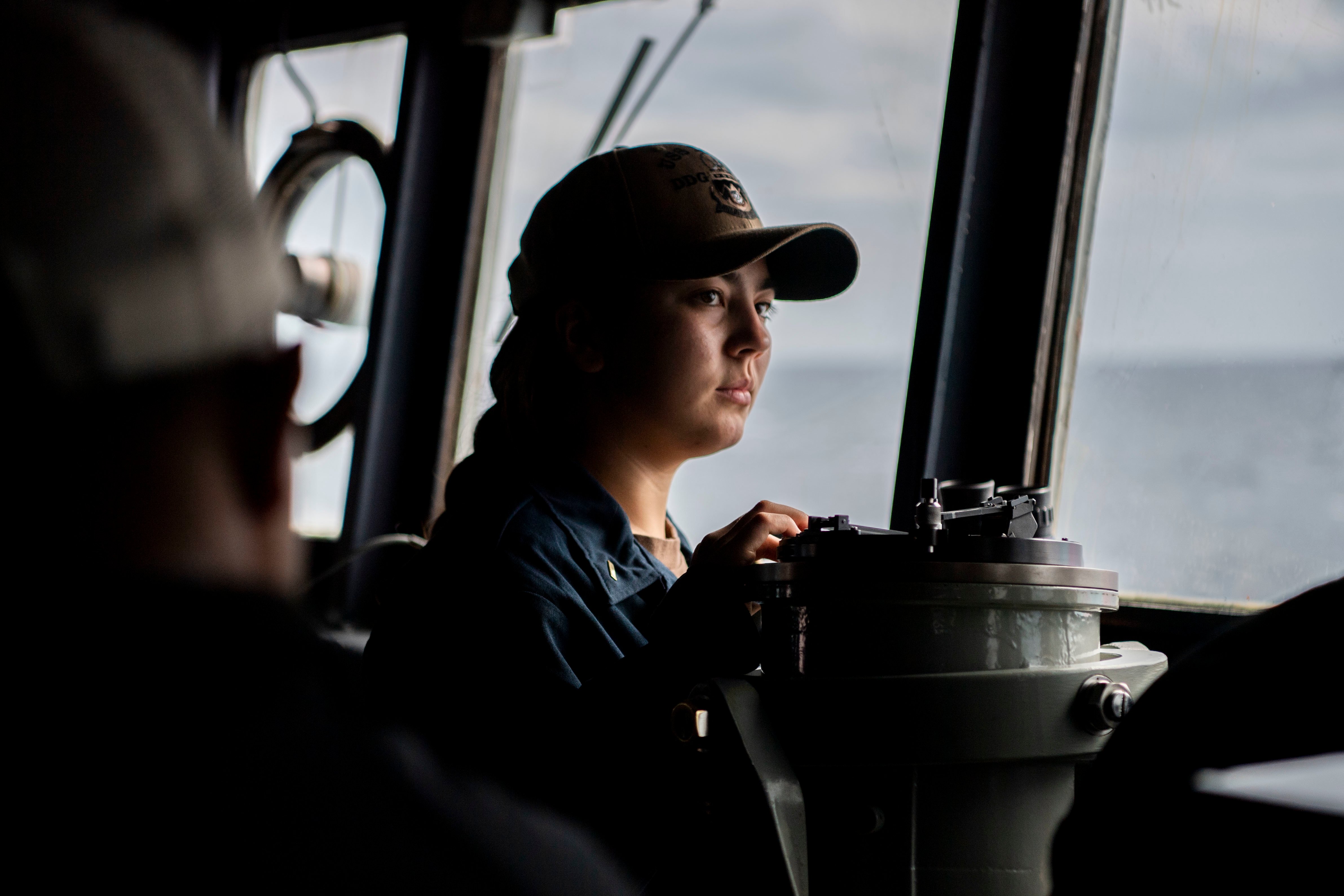
As investigators looked at the collisions’ underlying causes, the Navy found that there were manning gaps and degraded equipment on many ships deployed to the Pacific.
Following the collisions, the Navy guaranteed Congress that only combat-ready ships would deploy.
“What does a combat-ready ship mean? That means ships deploy and leave no redundancy at the pier, that everything works on that ship the moment they deploy,” then-SWO Boss Brown told USNI News in 2019.
“We’re going to deploy our ships fully certified, fully manned at 92/95 (fit/fill).”
Maintaining the Navy’s measure for making sure qualified sailors are installed on the right jobs, known as fit, and that there are enough crew aboard, known as fill, has been a struggle for the service.
To meet the demand, the service pulls the sailors with the Navy Enlisted Classifications (NECs) it needs from ships in maintenance and other non-deployed duty stations.
“We are doing it, it remains a challenge, it remains a little bit of a friction point because I worry about ships, taking that manpower off in the maintenance phase, particularly critical NECs,” Kitchener said.
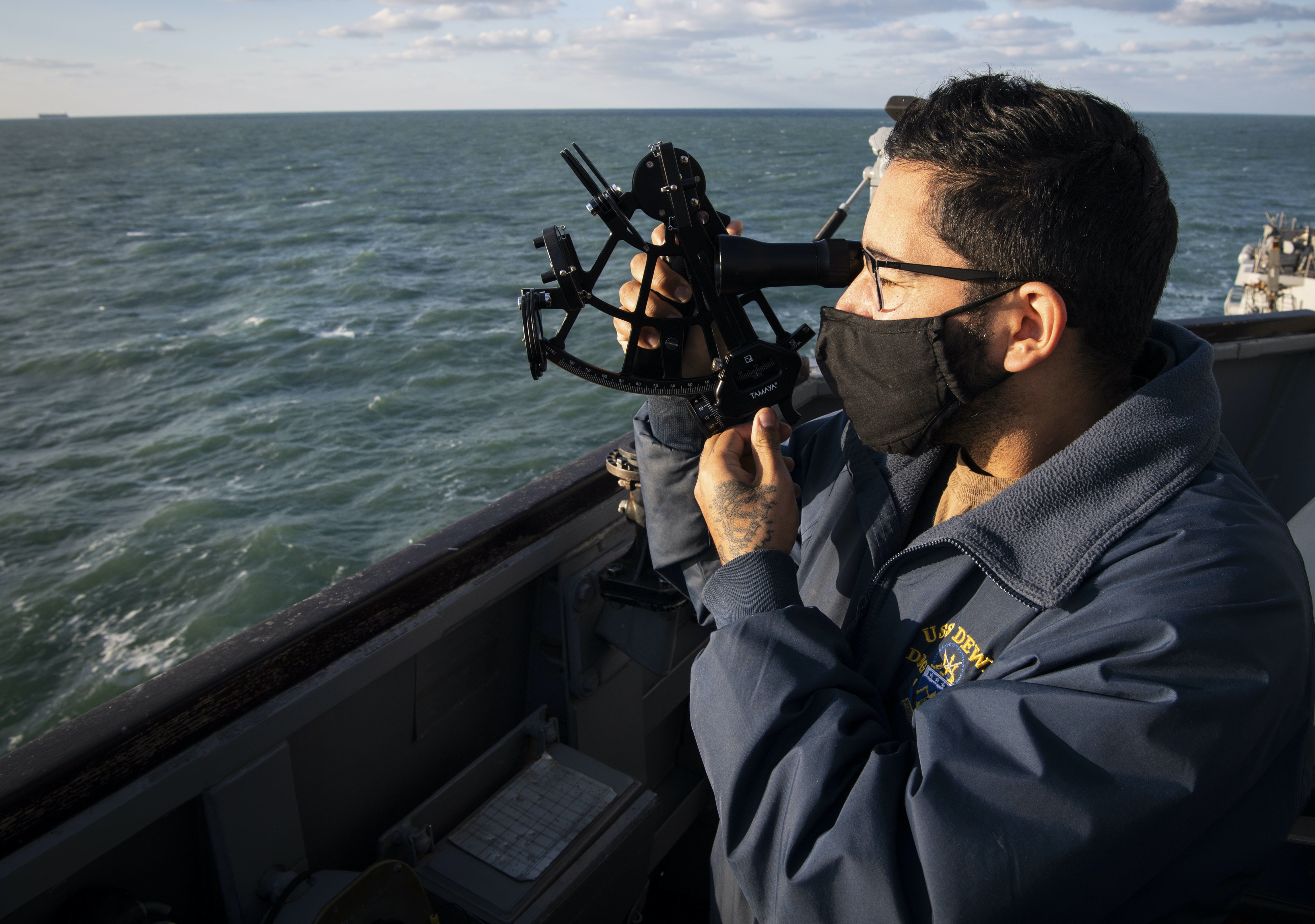
In Fiscal Year 2020, the Navy moved 1,760 sailors for temporary additional duty (TEMADD) to fill gaps in critical NECs on deploying ships, Kitchener said in January.
To blunt the effects, SURFOR last year launched the data-driven crewing model Surface Manning Experience (SURFMEX) that tracked six critical NECs – sonar technician, Aegis fire controlman, gas turbine system technician (electrical and mechanical), quartermaster and engineman – to prevent churn in ship manning, according to Seapower.
The SURMEX program was showing good early results but “we remain challenged with our TEMADDs and it puts a strain on our sailors,” Kitchener said.
“We’re looking at doing some other pilots [to try] to reduce TEMADDs, looking at other ways we can man.”
One pilot program will remove the crew from a destroyer during its maintenance phase while training on shore until the ship is ready for training ahead of deployments.
Maintaining the 92/95 crewing standard “still remains a strain on the force because of that tax we pay on ships in the maintenance phase,” he said.
Culture
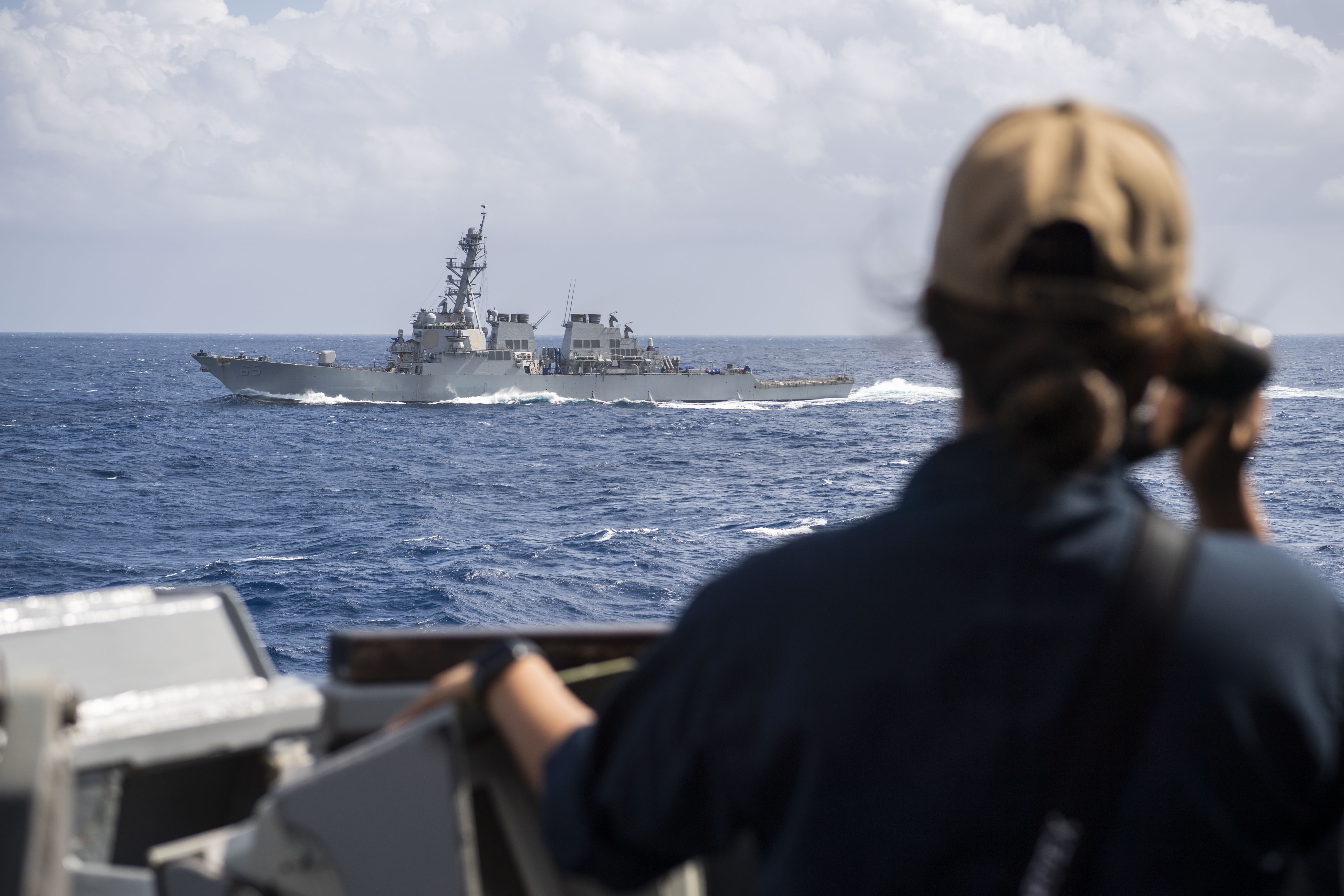
Perhaps the trickiest issue that faced the service is solving the underlying “zero-defect” culture problem that creates officers who shun risk and is quick to punish minor mistakes.
“I don’t think there is a zero-defect mentality. In our force today. Most of the time, when we’re relieving people, it’s usually for toxic leadership issues, things like that, not necessarily competency, and we’re learning from the mistakes,” Kitchener said.
Since the collisions, the surface fleet has adopted parts of naval aviation’s debriefing methodology that encourages critical assessment in debriefs to identify mistakes, Kitchener said.
“You pre-brief, brief and then afterward you do a debrief and we’ve been collecting data on that since the collisions. It’s pretty good. It gets bigger every year, the critiques that we do and that open discussion, so I’m pretty happy with that,” he said.
“The other way we try to get at culture is trying to increase that transparency and trust. That again is being able to discuss things that have gone wrong and how do we overcome that?”
Key to the culture change is predicting problems before they happen. Kitchener has touted his command’s use of data from across the command to create a better understanding of readiness in ships and personnel.
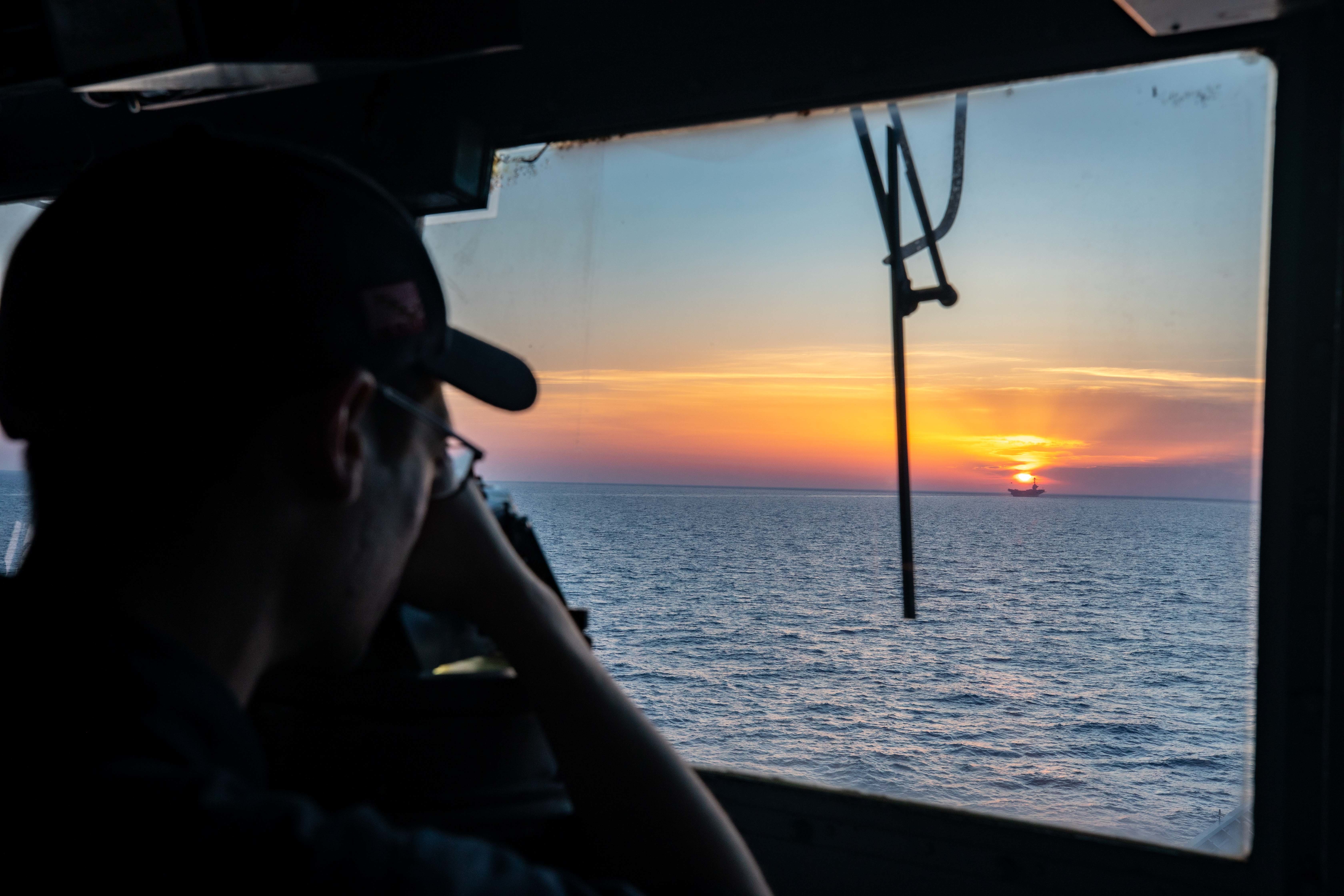
“We’ve driven it towards being a learning organization where previously we weren’t necessarily. We were kind of reactive, and now we’re trying to be more proactive. I would tell you, we’re not completely there,” he said.
Key for Kitchener is to keep the reform momentum to build on the incremental successes.
“Vigilance remains the term. We’ve learned a lot, we’ve invested a lot and we just got to keep it all moving forward,” he said.
“We’ve all got to be making sure that we’re following the rules and the procedures we put in place. And I think for the most part, we’re doing better at that oversight role than we were back in 2017.”





